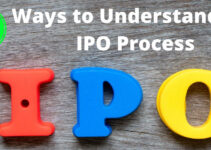The IPO market in India is booming from the past few years. We have seen multiple IPO success stories recently. These successful IPOs have prompted a lot of novice investors to start considering IPO as a potent tool for investment.
IPO is crucial in other sense too. It is an indicator of the economic health and stability of the nation’s economy. If the country’s economy is going in the right direction, IPOs attract a lot of investors. On the contrary, if the situation is grim, people become sceptical and avoid investing in IPOs altogether.
For e.g., the Indian stock market saw 90 IPOs in the year 2018, while in 2020, the number is around 10. When you look at the economy’s performance, it becomes clear that the economy of the nation and Primary market is interconnected.
You might have come across various fancy terms like IPO lot size, Grey Market, and IPO Face Value. From an investor’s point of view, it’s crucial to understand these terms correctly. A detailed understanding of these terms can come in handy while taking critical investment decisions.
In this piece of information, we will be talking about Face Value of IPO. But for better understanding, let’s refresh ourselves about IPO.
What is an IPO?
Initial Public Offering or IPO, as it is generally known, is a process through which a company offers its share to the investors. The process is initiated to raise the fund and take the company public. There are two methods for issuing an IPO. One is through the book building method, and the other is through the fixed price method. Both ways have their pros and cons. The most prevalent process of issuing IPO in India is by Book building.
To understand the Face Value of IPO, it’s vital to follow this method first.
What is the Book Building method?

In this method, the company doesn’t fix the exact price of the share. It sets a specific price band for the issue. The interested investors then place their bids on various price ranges. In this method, the price of the item is decided after the process of biding is complete.
The price that receives maximum bidding from interested investors is fixed as the issue price. During this process, the number of bidders and their bidding price is regularly updated on the platform.
During this process, the company the floor price and ceiling price of the issue. The ceiling price is the maximum price at which the IPO can be issued, and the floor price is the minimum price at which the share can be issued. In short, the final issue price will be equal to or above the ceiling price and similar to or below the ceiling price.
It is during this process that the company releases the face value of the share.
What is the Face Value of the share?
Investors are now well-accustomed to the terms like floor price, ceiling price, and issue price. Now the Face value or sometime also known as the Par value can be understood as the nominal Value of the share to be issued.
For e.g., the face value can be any number like INR 2, INR 10, or INR 1000. The issue price or the price band decided by the company is the sum of the face value of the share and the Premium that the company demands from its subscribers.
In simple terms,
Face Value of the share + Premium asked by the company on the share = the issue price of the share
Now a crucial thing that investors need to understand about the Premium over face value decided by the company is that the Premium is not decided randomly. The company fixes the Premium depending on various performance matrices of the company.
These matrices include the company’s performance, profit, stability, past financial performance, and future growth potential. The company that is not performing so well generally sets the price bands near the face value as it wants to attract potential investors. On the contrary, the companies that are performing well enough and are confident that investor will line up for bidding keeps the price band well above the face value.
After understanding what the Face value is, let delve deeper into its utilization.
What is the Importance of the Face Value of any share?

Once the company goes public and its shares start trading, market sentiments, and the company’s performance in the business primarily affect the valuation of the share. In such circumstances, it is not suitable for the company to use the valuation of the share for various purposes.
Primary Use
The primary use of face value is during the splitting of share. Let’s assume the valuation of the share of a company in the market is INR 10000, and the face value is INR 20. At the market price, the share is not suitable for investments for small retail investors. To attract more retail investors, the company will announce the split of 1:4. The valuation of the share will reduce to INR 2500, and the face value will reduce to INR 4. This makes the share attractive for small investors.
Secondary Use
The secondary use of the face value is during the announcement of dividend by the company to its shareholders.
For e.g., The face value of the share is INR 10, and the valuation of the share is INR 200. The company decides to offer a 50% dividend to its existing investors. In this case, the dividend is calculated on the Face value, and it will be INR 5.
Conclusion
Though these are very technical terms and you need not be experts in this matter to be investors, it’s better to have a clear understanding of these terms as investors. A lot of actions taken by the listed companies are based on the face value, and hence you should have some information about it. Having some information about the tools you invest or are planning to invest your hard-earned money never hurts!
More Article on IPO




